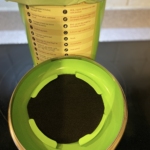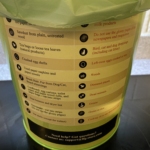518Views
We are all aware of the earth warming up, ocean levels rising, ozone layer eroding and shortening our life on the only livable planet in this galaxy. So, what can you do to help? Well there are many things, that an individual can do, and collectively, if we all start taking these steps, its impact is greater and far reaching. We are talk about reducing our carbon footprint, consuming water fastidiously, being mindful of our resources, but I wanted to start our journey in the kitchen where we are all spending alot of time, these days, specially in light of covid.
What is composting?
Composting is recycling your kitchen’s waste and utilizing it in the garden. This is achieved by expediting the decomposition of materials that turn into compost.
Compost is NOT soil. It’s a common misconception that the end-result of composting is that dirt you find in the garden. However, compost is the FERTILIZER, that enriches the soil, to grow hardier and healthier plants.
The microbes are the workers of the composting equation. They need air, water and food to do their job and it is up to you to supply it to them in the right amount. If you have heard that compost bin creates a foul odor it is most likely, a case of not enough air circulating throughout the waste material. Without air, the material will decompose, but it’s performed by anaerobic microbes. If there is an unpleasant smell, be sure to rotate the material and/or you can add wood chips or hay.



Compost is an organic substance that is added to the soil, which functions more than just being a fertilizer. It’s mulch, a soil conditioner, that provides nutrients for the plants.
When composting, you need both carbon and nitrogen rich material, such as fruits and vegetable scraps. Other composing materials include: eggshells, clippings, seaweed, kelp, coffee grounds, wood ash, tea leaves, cardboard, shredded paper, newspaper, corn stalks, wood chips, saw dust, pet hair, and laundry lint.
You shouldn’t add any animals products such as animal meat or bones. Also, no egg yolk, no oily products or fish remains. These materials will attract unwanted pests and smell badly.
The Greens and Browns of Composting
“Greens” and “Browns” are used to refer to the organic materials used in generating compost.
1)Greens are the organic materials rich in nitrogen or protein. This allows microorganisms in the compost to grow and multiply. These also generate heat.
2) Browns are the organic matter that have a high carbon or carbohydrate content. These function as a air filter, absorbing the bad odors that emanate from the compost pile. The carbons also help prevent organic nitrogen from escaping and also aids in expediting the formation of humus from compost. Although, leaves comes in green, brown, red colors, they are classified as browns, due to their high carbon content. An exception is the oak tree, which contains high amount of nitrogen, thus falls in the green category.
Sugar products are also classified under browns. These include molasses, syrups, sugar and carbonated drinks. These sugar products can increase the activity of the microbes in your compost pile.
Non-Edible Composting Items
In addition to acceptable food scraps, there are other organic items to can add to your compost. These include:
– Lint collected from your dryer
– Cardboard – cut into strips or small pieces
– Hair – not a huge hair ball
– Newspaper – cut into strips – don’t use glossy pages.
and don’t add too much of these items, as they can dry out the pile
– coffee grounds and paper filters
– sawdust and wood chips (shavings)
– straw
– seaweed or algae.
When Will Your Compost Be Ready?
It can take anywhere from a month or a year to see the results of your labor. There are many variables in the process. Your compost is ready when:
– the amount of material is about half of the original in volume
-there are no recognizable parts in the finished material
– it should be cool, not hot, to the touch
– It is a rich, dark color and looks very much like top soil
Good luck with your composting, reducing kitchen and household waste and re-using it in your garden for your plants. Let me know if you have any questions.


2 Comments
by Sindia Bharwani
Yes, you are right. Compost is NOT soil. Is a common misconception.
Comments are closed.